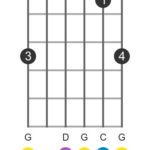For guitarists seeking to sculpt their tone with a collection of effects pedals, managing them can quickly become a tap-dancing challenge. Enter the Guitar Pedal Switcher, a powerful tool designed to streamline your pedalboard and unlock new levels of sonic flexibility. Think of it as the command center for your stompboxes, allowing you to effortlessly switch between complex pedal combinations with a single stomp.
What is a Guitar Pedal Switcher and Why Do You Need One?
A guitar pedal switcher, at its core, is a device that allows you to engage and disengage multiple effects pedals simultaneously. Instead of individually stomping on each pedal to create your desired sound, a switcher lets you pre-program combinations of pedals into “presets” or “patches.” With a single press of a footswitch, you can activate or bypass a whole chain of effects, opening up seamless transitions between clean tones, soaring leads, and experimental soundscapes.
For players with a growing pedal collection, a switcher offers several key advantages:
- Simplified Pedalboard Control: No more tap-dancing between songs or sections. Switch instantly between presets.
- Noise Reduction: By taking multiple pedals out of your signal chain when not in use, switchers can reduce unwanted noise and signal degradation.
- True Bypass: Many switchers offer true bypass loops, ensuring that your signal remains pristine when pedals are bypassed, preserving your guitar’s natural tone.
- Creative Exploration: Experiment with complex pedal combinations and easily recall them live or in the studio.
- Pedalboard Organization: Switchers can help tidy up your pedalboard by centralizing your pedal engagement.
Providence PEC-2: A Smart Solution for Pedalboard Switching
The Providence PEC-2 Pedalboard Effects Controller offers a versatile and user-friendly approach to managing your effects. Positioned as a slightly more accessible alternative to the Boss ES-8, the PEC-2 provides a robust set of features for demanding guitarists.
One of the standout features of the PEC-2 is its loop configuration. It features eight loops, with five wired in series and the remaining three completely independent. This thoughtful design caters to the common practice of placing certain pedals before the amplifier’s input and others in the effects loop.
Series and Separate Loops: Optimizing Your Signal Chain
The PEC-2’s series loops are ideally suited for pedals that traditionally sound best when placed in front of your amplifier. This includes your core gain pedals like:
- Overdrive pedals
- Distortion pedals
- Fuzz pedals
- Compressor pedals
By connecting these pedals to the five series loops, you ensure they interact with your amp in the most musically effective way.
Alt text: The Providence PEC-2 guitar pedal switcher with its clearly labeled loops and footswitches, designed for efficient pedalboard control.
The three separate loops, on the other hand, are perfect for effects that often sound best in your amplifier’s effects loop, such as:
- Reverb pedals
- Delay pedals
- Modulation effects (Chorus, Flanger, Phaser)
This separation allows you to run time-based and modulation effects after your preamp stage, creating a cleaner and more defined sound, especially with high-gain amplifier settings. This logical loop arrangement simplifies setup compared to more complex switchers like the Boss ES-8 or ES-5, which might require more intricate wiring to achieve the same routing flexibility for effects both before and after the amplifier’s preamp.
Buffered and Non-Buffered Inputs: Signal Integrity and Fuzz Compatibility
The PEC-2 also offers selectable buffered and non-buffered inputs, further enhancing its versatility. A high-quality buffer is invaluable when using long cable runs to and from your pedalboard. Long cables can degrade your guitar signal, resulting in a loss of high-end frequencies and overall clarity. The PEC-2’s buffer compensates for this signal loss, maintaining the brilliance and presence of your tone.
However, some vintage-style fuzz pedals are notoriously sensitive to buffers placed before them in the signal chain. These “temperamental beasts” can sound thin and weak when preceded by a buffer. For fuzz aficionados, the PEC-2’s non-buffered input is a crucial feature. By plugging into the non-buffered input when using a fuzz pedal, you ensure that the fuzz interacts directly with your guitar’s signal, preserving its intended character and responsiveness.
If you desire the benefits of a buffer while still using a fuzz, the PEC-2 provides a solution. You can place your fuzz pedal in loop 1 and insert a dedicated buffer pedal immediately after it in loop 2. This configuration allows you to utilize your fuzz without buffer interference while still benefiting from a buffered signal for the rest of your chain.
Conclusion: Streamline Your Tone with a Guitar Pedal Switcher
A guitar pedal switcher is an indispensable tool for the modern guitarist. It simplifies pedalboard control, reduces noise, and unlocks creative routing possibilities. The Providence PEC-2, with its intelligently designed loop configuration and buffered/non-buffered input options, stands out as a practical and effective solution for managing your guitar effects. Whether you’re a gigging musician or a studio enthusiast, a guitar pedal switcher like the PEC-2 can revolutionize your pedalboard workflow and elevate your sonic expression.

